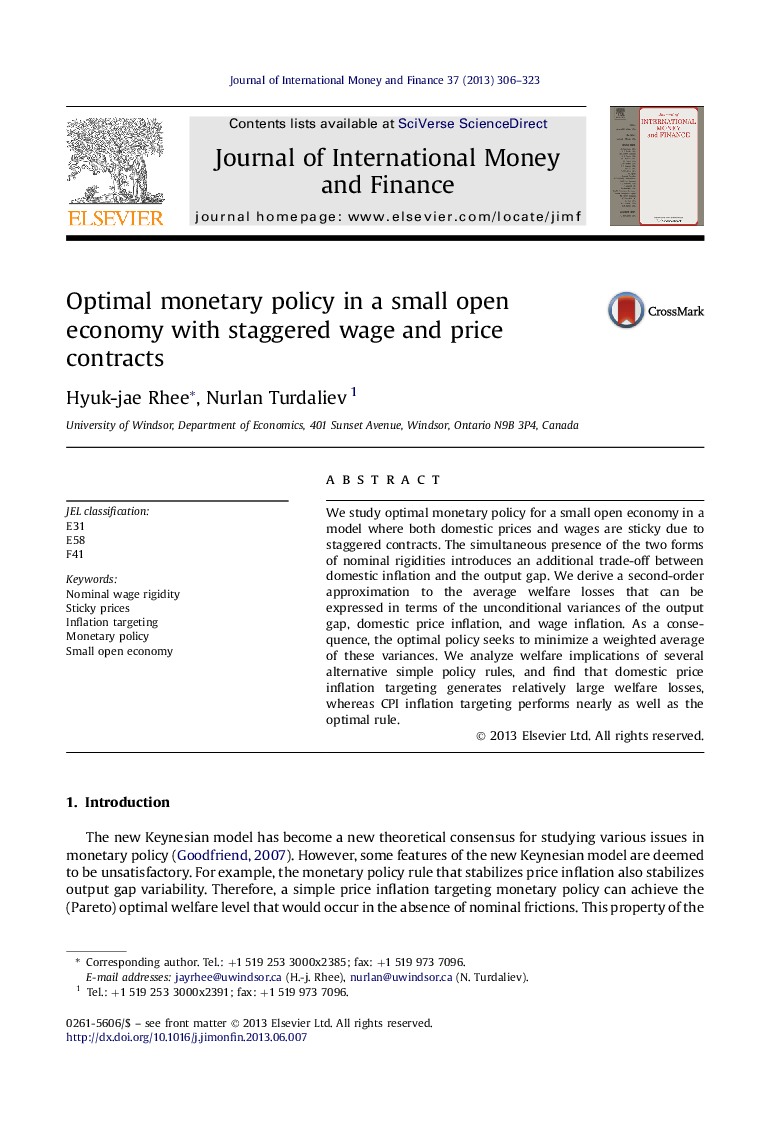| Article ID | Journal | Published Year | Pages | File Type |
|---|---|---|---|---|
| 964683 | Journal of International Money and Finance | 2013 | 18 Pages |
•We incorporate wage and price stickiness into a small open economy model.•Optimal policy uses domestic inflation, wage inflation, and output gap.•The policy that exclusively targets domestic price inflation is suboptimal.•The policy that responds to CPI inflation is almost as good as the optimal policy.
We study optimal monetary policy for a small open economy in a model where both domestic prices and wages are sticky due to staggered contracts. The simultaneous presence of the two forms of nominal rigidities introduces an additional trade-off between domestic inflation and the output gap. We derive a second-order approximation to the average welfare losses that can be expressed in terms of the unconditional variances of the output gap, domestic price inflation, and wage inflation. As a consequence, the optimal policy seeks to minimize a weighted average of these variances. We analyze welfare implications of several alternative simple policy rules, and find that domestic price inflation targeting generates relatively large welfare losses, whereas CPI inflation targeting performs nearly as well as the optimal rule.
